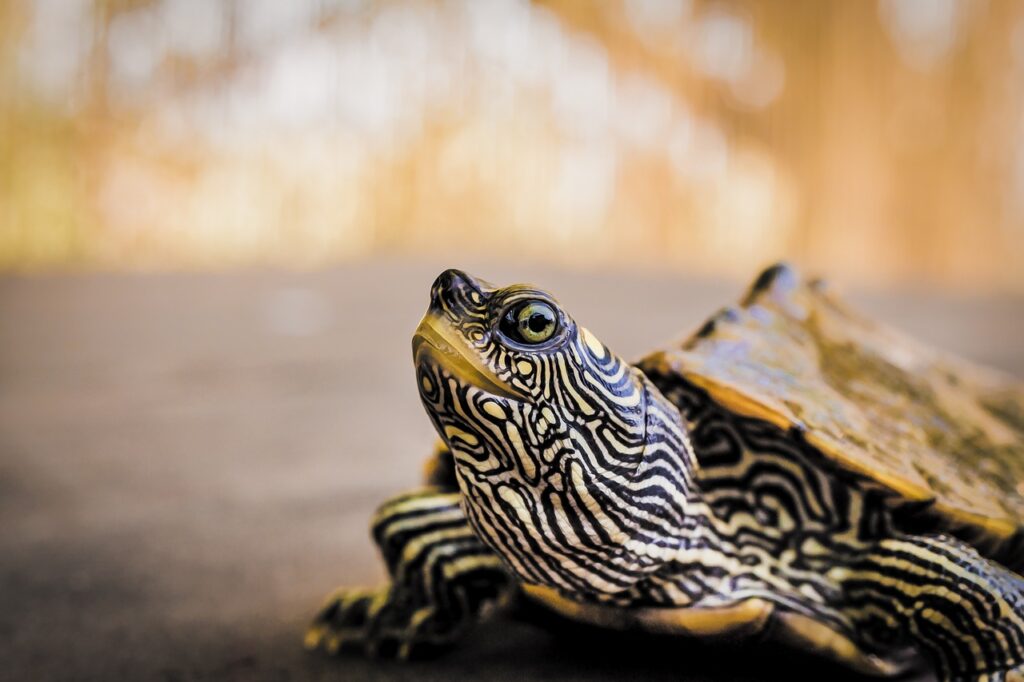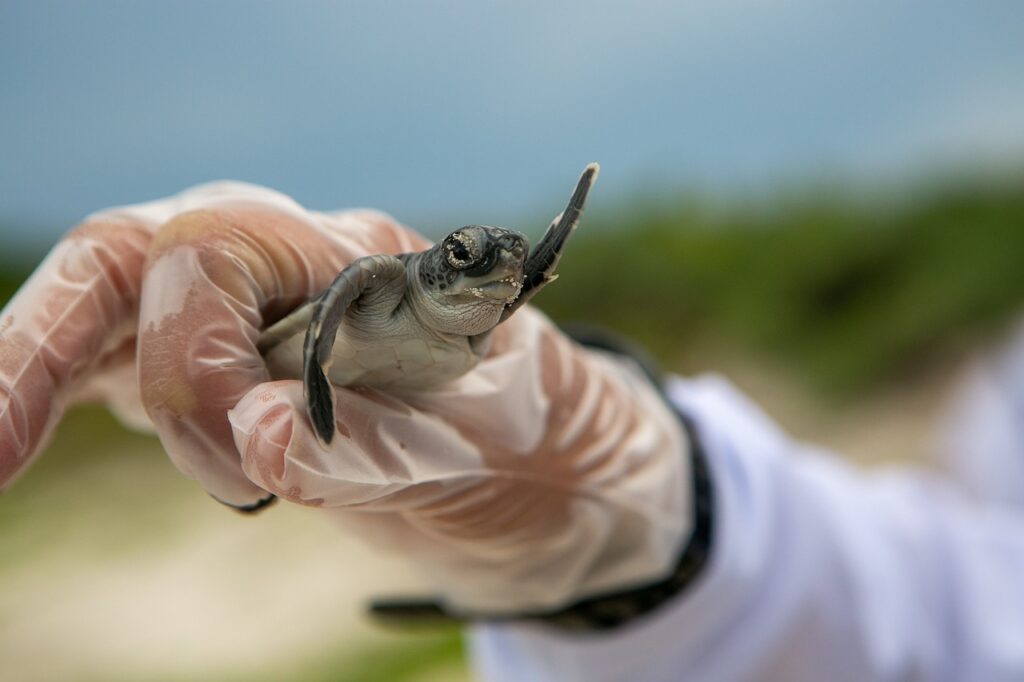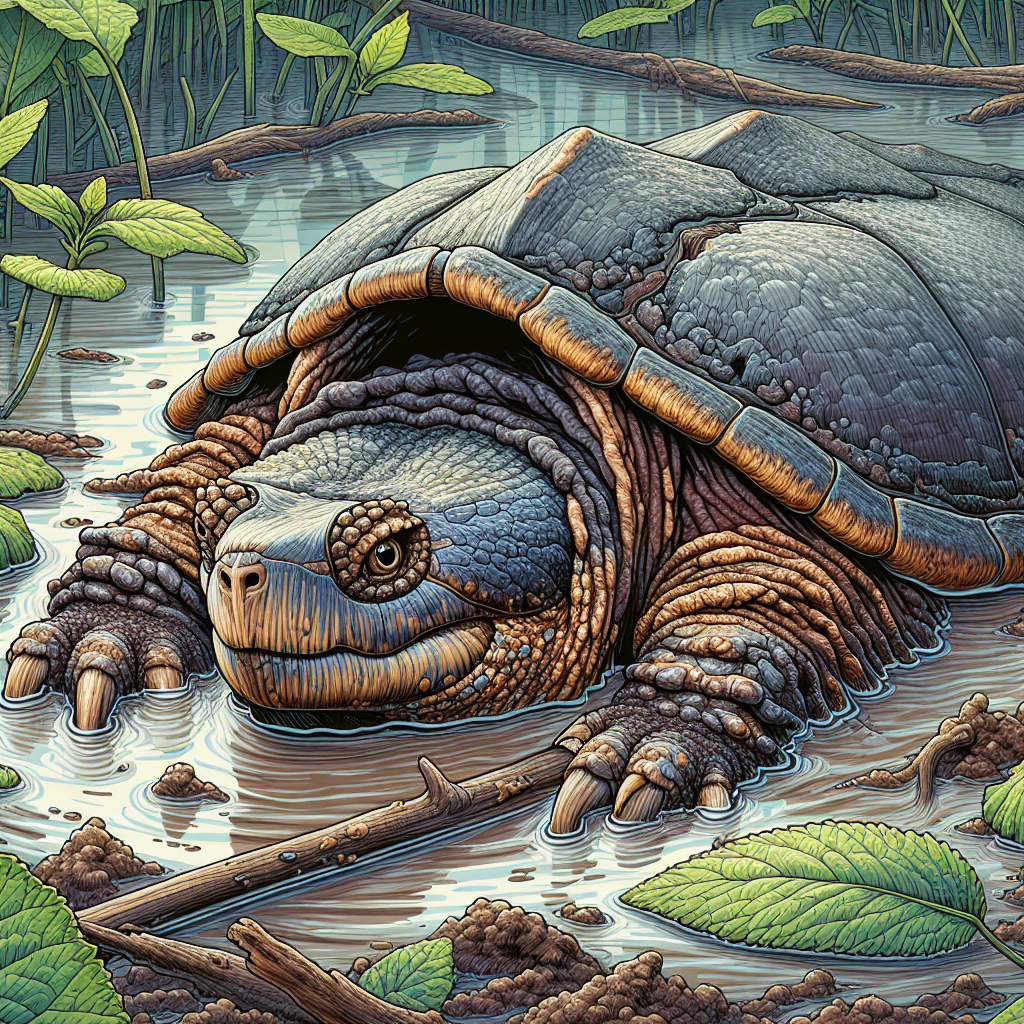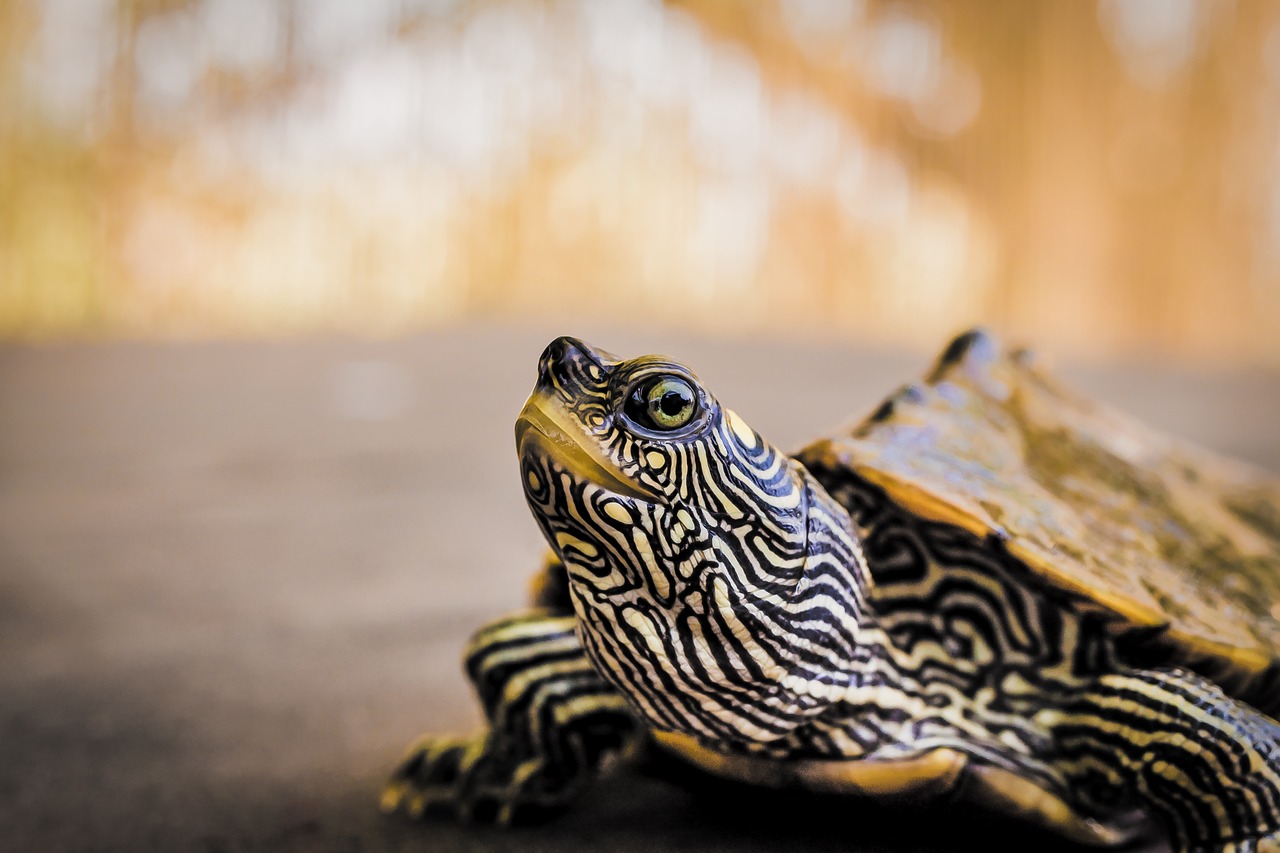Imagine you’re strolling along a serene riverbank, when suddenly you spot a mysterious creature lurking in the water. Is it a snapping turtle? In this article, you’ll uncover the secrets of identifying these fascinating reptiles. Whether it’s their distinctive shell, sharp beak-like jaws, or their unique tail, we’ll guide you through the telltale signs that will help you distinguish a snapping turtle from its distant relatives. Get ready to unravel the secrets of these intriguing freshwater creatures.
Physical Characteristics
Size
Snapping turtles are known for their large size, with adults typically measuring between 8 and 20 inches in shell length. However, some individuals have been recorded to reach up to 18 inches in shell length. Males tend to be slightly larger than females, but the size difference is not significant.
Shell
The shell of a snapping turtle is one of its most defining features. It is characterized by a rough texture and is divided into two parts: the carapace and the plastron. The carapace refers to the top part of the shell, while the plastron is the bottom part. The shell is usually dark brown or black, which helps the turtle blend into its environment.
Head
The head of a snapping turtle is large and powerful, equipped with a sharp, beak-like mouth and powerful jaws. Its eyes are positioned on the top of the head, allowing the turtle to observe its surroundings while remaining mostly submerged. The head is covered with rough skin and features distinctive ridges on the top, a characteristic unique to snapping turtles.
Legs and Tail
Snapping turtles have robust legs that end in strong, clawed feet. These adaptations allow them to effectively move on land and in water. The hind legs are particularly muscular, enabling the turtle to swim swiftly and powerfully. The tail is long and thick, often as long as the shell itself. It helps with balance and provides propulsion in the water when the turtle is swimming.
Shell Features
Carapace
The carapace of a snapping turtle is known for its rough texture, with scutes that are raised and serrated along the back of the shell. These scutes help protect the turtle from potential predators. The carapace is also quite domed, providing ample space for the turtle’s internal organs and protection from external elements.
Plastron
The plastron is the bottom part of the turtle’s shell and is typically lighter in color than the carapace. It is flat and provides protection for the turtle’s ventral side. The plastron features hinges that allow the snapping turtle to retract its head, tail, and limbs inside the shell for added defense.

Distinctive Features
Ridges on Shell
One of the most distinctive features of a snapping turtle is the ridges found on the top of its shell. These ridges run parallel to the turtle’s spine and give the shell a unique appearance. The ridges are more pronounced in younger turtles and tend to flatten as the turtle ages.
Long Tail
Another characteristic feature of snapping turtles is their long, thick tail. This tail plays a crucial role in swimming, as the turtle propels itself through the water using powerful lateral movements. The length of the tail is generally proportional to the size of the turtle, with larger individuals having longer tails.
Beak-Like Mouth
The snapping turtle’s mouth is highly distinguishable, resembling a beak. It is characterized by a sharp, hooked upper jaw and a smooth lower jaw. This design allows the turtle to easily seize and tear apart its prey. The mouth is equipped with strong, sharp teeth that can inflict serious bites when provoked.
Powerful Jaws
The powerful jaws of a snapping turtle are a notable feature. They enable the turtle to exert considerable force when capturing prey and can cause severe injuries to anything that ventures too close. It is important to exercise caution when handling a snapping turtle, as their bite can be painful and potentially harmful.
Coloration
Common Snapping Turtle
The common snapping turtle, often found in freshwater habitats across North America, typically displays a dark brown or black coloration on its shell. The skin on its head, neck, and legs is usually a lighter shade of brown, while the plastron tends to be lighter in color, ranging from tan to yellow.
Alligator Snapping Turtle
The alligator snapping turtle, a species native to the southeastern United States, differs in coloration from the common snapping turtle. Its shell is usually dark brown or black but may have a more textured appearance, resembling the rough skin of an alligator. The skin on its head is often ridged and camouflaged with a mottled blend of browns, grays, and greens.

Habitat
Freshwater
Snapping turtles are primarily found in freshwater environments, such as lakes, ponds, rivers, and swamps. They tend to inhabit areas with a combination of submerged vegetation, muddy bottoms, and ample aquatic prey. Snapping turtles are well-suited to these freshwater habitats, as they are skilled swimmers and can tolerate both still and flowing water.
Aquatic Habitats
Within their freshwater habitat, snapping turtles exhibit a preference for specific aquatic features. They are commonly found in areas with ample vegetation for cover and basking opportunities. Snapping turtles tend to select locations with underwater structures, such as fallen logs or rocks, which provide shelter and nesting sites.
Behavior
Aggression
Snapping turtles are known for their aggressive behavior, especially when provoked or threatened. They have a strong bite and are not hesitant to use it as a defense mechanism. It is crucial to approach snapping turtles with caution and give them plenty of space to avoid any potential aggressive encounters.
Basking
Snapping turtles are ectothermic reptiles, meaning they rely on external sources of heat to regulate their body temperature. Basking is an essential behavior that allows them to absorb energy from the sun and warm their bodies. They often bask on logs or rocks near the water’s edge, taking advantage of the heat and UV radiation provided by the sun.
Swimming
Snapping turtles are excellent swimmers, thanks to their strong legs and powerful tails. They use their limbs to propel themselves through the water and can move swiftly when necessary. Snapping turtles are also known to spend a significant amount of time underwater, making use of their ability to hold their breath for extended periods.
Lifespan
Snapping turtles have the potential to live for several decades, with some individuals reaching 30 to 40 years of age or possibly even longer. However, many factors can influence their lifespan, including predation, habitat quality, and human activities. With appropriate conditions and minimal disturbances, snapping turtles have the potential for a relatively long lifespan.

Feeding Habits
Carnivorous diet
Snapping turtles are carnivorous reptiles with a diet primarily consisting of animal matter. They are opportunistic feeders and will consume almost anything they can overpower, including fish, amphibians, reptiles, birds, small mammals, and even carrion. Their powerful jaws and sharp beak enable them to tear apart various prey items.
Prey Items
The prey items of snapping turtles largely depend on the availability within their habitat. They commonly feed on fish, including small species like minnows and larger species such as perch or bass. Snapping turtles also consume amphibians, such as frogs and salamanders, as well as small reptiles like snakes and turtles. In certain cases, they may scavenge on dead animals they come across.
Hunting Strategy
When hunting, snapping turtles primarily rely on their excellent sense of smell to detect potential prey. They are highly skilled ambush predators, often found partially buried in the mud or concealed among aquatic vegetation, patiently awaiting an opportunity. Once prey is within reach, the snapping turtle rapidly extends its head and uses its powerful jaws to capture and consume the prey.
Reproduction
Sexual Dimorphism
Distinguishing between male and female snapping turtles can be challenging without close examination. Sexual dimorphism in this species is not very pronounced. For larger individuals, males tend to have longer tails and thicker, more muscular hind legs compared to females. However, size alone is not a definitive indicator of sex.
Mating Practices
Snapping turtles have unique mating practices that involve courtship rituals. During the mating season, which typically occurs in the spring, male snapping turtles will seek out females in their aquatic habitats. The male may swim alongside the female or engage in gentle nudging to indicate his intent. Once the female is receptive, mating occurs with the male mounting the female from behind, gripping her shell with his claws.
Nesting and Hatching
After successful mating, female snapping turtles will venture to suitable nesting sites to lay their eggs. These nests are usually excavated in sandy or loose soil areas near the water’s edge. Female snapping turtles lay multiple clutches of eggs throughout the nesting season, with each clutch containing around 20 to 40 eggs. Incubation typically lasts between 9 and 18 weeks, with the temperature influencing the sex of the hatchlings. Warmer temperatures lead to more females, while cooler temperatures produce more males.

Distribution
North America
Snapping turtles are native to North America and can be found in various parts of the continent. Their range extends from southern Canada, including provinces such as Ontario and Quebec, through the United States, encompassing states from the Midwest to the East Coast and parts of the Southwest. Snapping turtles are well-adapted to a range of freshwater habitats across North America.
Conservation Status
Threats
Snapping turtles face various threats that impact their populations and overall conservation status. Habitat loss and degradation due to human activities, such as urban development and pollution, pose significant risks. Additionally, road mortality from vehicle collisions during nesting or migration can significantly impact local populations. Snapping turtles are also susceptible to harvest and illegal wildlife trade, as their meat and shells have market value.
Conservation Efforts
Conservation efforts for snapping turtles focus on habitat protection, as well as education and outreach to raise awareness about the importance of this species. Several organizations and institutions work toward the conservation of snapping turtles, aiming to mitigate threats, monitor populations, and encourage responsible management practices. These efforts play a crucial role in maintaining healthy snapping turtle populations and ensuring their long-term survival.
In conclusion, snapping turtles are fascinating reptiles with unique physical characteristics, distinctive features, and interesting behaviors. Understanding their size, shell features, head structure, and other physical attributes can help identify these turtles accurately. Their coloration varies between species, with the common snapping turtle displaying a dark shell and the alligator snapping turtle showcasing a more textured appearance. Snapping turtles primarily inhabit freshwater environments, exhibiting unique behaviors such as aggression, basking, swimming, and an impressive lifespan. Their carnivorous diet, hunting strategy, and reproductive practices add to their intriguing nature. While threats to their conservation exist, ongoing efforts are crucial to protect and preserve these remarkable creatures for future generations to enjoy.

